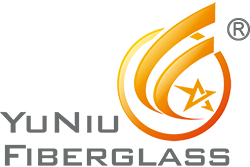Fiberglass roving is a high-strength, high-modulus material made of glass fibers that are twisted or plied together. It is widely used in the construction, automotive, and electronics industries for its excellent mechanical properties, such as high tensile strength, chemical resistance, and electrical insulation. In this article, we will provide a comprehensive analysis of the current market scenario and future prospects of fiberglass roving.
The global fiberglass roving market is expected to grow at a CAGR of 5.6% from 2021 to 2028, according to a report by Grand View Research. The growing demand for lightweight and high-performance materials in various end-use industries, coupled with the increasing adoption of composites in automotive and aerospace applications, is driving the market growth. Moreover, the rising investments in infrastructure development and the growing construction industry in emerging economies are expected to fuel the demand for fiberglass roving in the coming years.
In terms of product type, the fiberglass direct roving segment is expected to hold the largest market share during the forecast period. This is due to its superior properties, such as high tensile strength, good adhesion, and excellent processing performance, which make it suitable for a wide range of applications.
In terms of end-use industry, the construction segment is expected to dominate the market during the forecast period. This is attributed to the increasing demand for fiberglass roving in construction applications, such as reinforcing concrete, roofing, and insulation, owing to its excellent fire resistance and durability.

The fiberglass roving market is expected to witness significant growth in the coming years, driven by the increasing demand for lightweight and high-performance materials in various end-use industries. The growing adoption of composites in automotive and aerospace applications, coupled with the rising investments in infrastructure development, is expected to fuel the market growth.
Moreover, the development of new and advanced manufacturing technologies, such as computer-controlled winding and filament winding roving, is expected to improve the production efficiency and reduce the cost of fiberglass roving, thereby boosting its adoption in various end-use industries.
Furthermore, the growing trend of sustainable and eco-friendly materials is expected to create new opportunities for the fiberglass roving market. The development of bio-based resins and recycled fiberglass roving is expected to gain traction in the coming years, owing to their low carbon footprint and environmental benefits.
In conclusion, the fiberglass roving market is expected to witness significant growth in the coming years, driven by the increasing demand for lightweight and high-performance materials in various end-use industries. The development of new manufacturing technologies and the growing trend of sustainable materials are expected to create new opportunities for the market players. Companies operating in the market should focus on developing innovative products and expanding their distribution channels to capitalize on the growing demand for fiberglass roving.
#Fiberglass roving#composites#fiberglass direct roving#filament winding roving
Post time: Apr-20-2023
